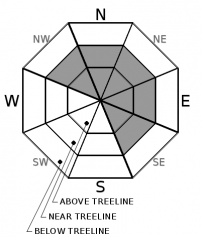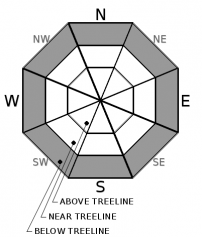| Sunday | Sunday Night | Monday | |
|---|---|---|---|
| Weather: | Cloudy. Snow showers in the morning, then snow showers likely in the afternoon. Snow levels below 7000 feet. Chance of precipitation is 80%. | Mostly cloudy then becoming partly cloudy. Snow levels below 7000 feet. Chance of precipitation is 5%. | Partly cloudy then becoming sunny. Snow levels below 7000 feet. Chance of precipitation is 0%. |
| Temperatures: | 31 to 36 deg. F. | 18 to 24 deg. F. | 34 to 39 deg. F. |
| Mid Slope Winds: | Southwest 15 to 25 mph. Gusts up to 40 mph in the morning. | Light winds. | Light winds. |
| Expected snowfall: | 70% probability of 3 to 7 inches. 30% probability of 2 to 4 inches. | SWE = up to 0.20 inch. | No accumulation. | SWE = none. | No accumulation. | SWE = none. |
| Sunday | Sunday Night | Monday | |
|---|---|---|---|
| Weather: | Mostly cloudy. Snow showers in the morning, then snow showers likely in the afternoon. Snow levels below 7000 feet. Chance of precipitation is 80%. | Mostly cloudy then becoming partly cloudy. Snow levels below 7000 feet. Chance of precipitation is 5%. | Partly cloudy then becoming sunny. Snow levels below 7000 feet. Chance of precipitation is 0%. |
| Temperatures: | 27 to 32 deg. F. | 16 to 21 deg. F. | 29 to 34 deg. F. |
| Ridge Top Winds: | Southwest 20 to 35 mph decreasing to 15 to 25 mph in the afternoon. Gusts up to 60 mph. | Light winds becoming northeast around 15 mph after midnight. | East around 15 mph. |
| Expected snowfall: | 70% probability of 3 to 8 inches. 30% probability of 2 to 5 inches. | SWE = up to 0.20 inch. | No accumulation. | SWE = none. | No accumulation. | SWE = none. |



























